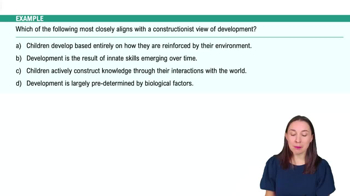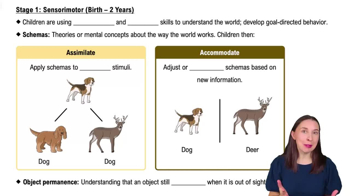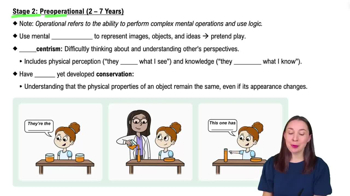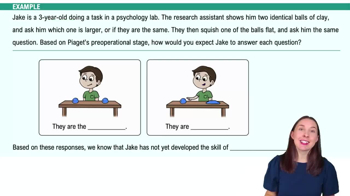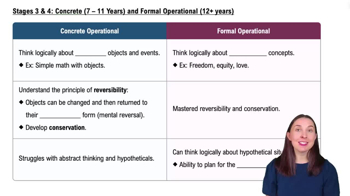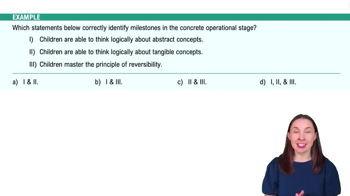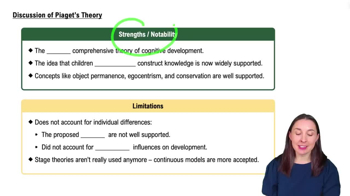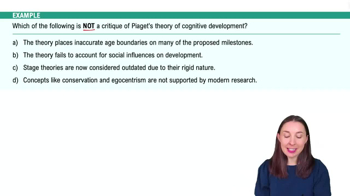Table of contents
- 1. Introduction to Psychology1h 43m
- 2. Psychology Research2h 20m
- 3. Biological Psychology2h 41m
- 4. Sensation and Perception28m
- 5. Consciousness and Sleep32m
- 6. Learning41m
- 7. Memory34m
- 8. Cognition37m
- 9. Emotion and Motivation35m
- 10. Developmental Psychology33m
- 11. Personality48m
- 12. Social Psychology41m
- 13. Stress and Health41m
- 14. Psychological Disorders44m
- 15. Treatment47m
10. Developmental Psychology
Piaget's Cognitive Developmental Theory
Struggling with Psychology?
Join thousands of students who trust us to help them ace their exams!Watch the first videoMultiple Choice
What does the term object permanence refer to?
A
An infant's developing ability to understand basic laws of physics (ex: gravity).
B
A child's preference for adult caregivers who they see the most often.
C
The understanding that objects continue to exist even when they cannot be seen.
D
Children's ability to use objects as symbols in play.
 Verified step by step guidance
Verified step by step guidance1
Object permanence is a fundamental concept in developmental psychology, particularly in the study of cognitive development in infants.
The term refers to an infant's understanding that objects continue to exist even when they are not visible or directly observable.
This concept is a key milestone in the sensorimotor stage of Jean Piaget's theory of cognitive development, typically developing between 4 to 7 months of age.
To understand object permanence, consider a simple experiment: if you hide a toy under a blanket, a child who has developed object permanence will actively search for the toy, indicating they know it still exists.
The development of object permanence is crucial as it lays the foundation for more complex cognitive processes, such as memory and symbolic thought.

 3:32m
3:32mWatch next
Master Introduction to Piaget's Theory with a bite sized video explanation from Hannah Gordils
Start learningRelated Videos
Related Practice



